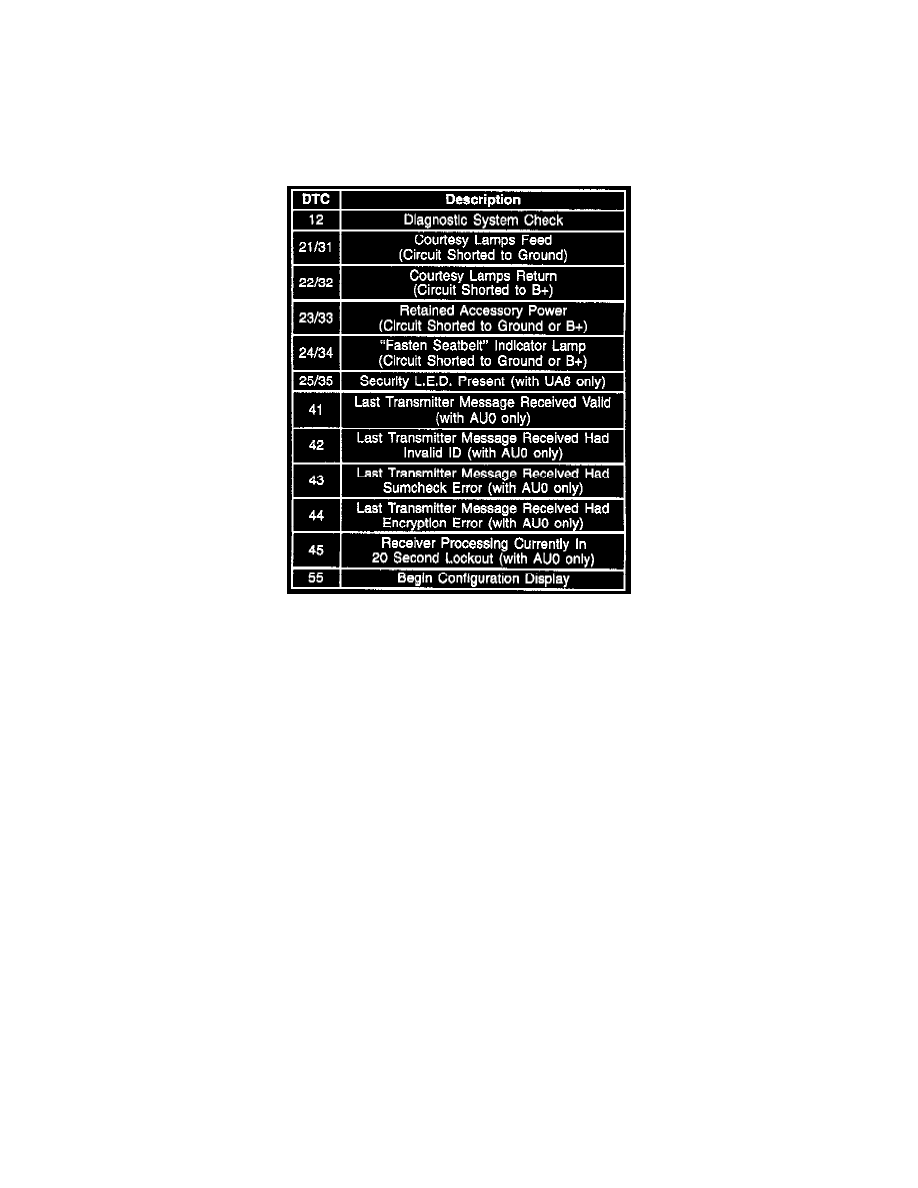Firebird V8-350 57L VIN P SFI (1996) Body Control Module Testing

In the Diagnostic Mode, DTCs are displayed in numerical order. The first DTC displayed is always DTC 12, followed by any "Current" DTCs (21-25) or
any "History" DTCs (31-35). "Remote Control Door Lock Transmitter Diagnostic DTCs" (41-45) will then be displayed if evoked while in the
Diagnostic Mode. The last DTC displayed is "Begin Configuration Display" (55). The first number following DTC 55 is the hardware configuration, and
the second number is the software configuration. DTC 55 and the two configuration numbers are always displayed. After the configuration numbers are
displayed, the entire list is repeated beginning with DTC 12. System faults are stored as "Current", or "History" DTCs. A "Current" DTC means that the
fault was present when the Diagnostic Mode was entered. A "History" DTC means the fault occurred sometime after the BCM was installed in the
vehicle (or since the last time the DTCs were cleared), but may not currently be present. If a "Current" DTC is stored, the associated "History" DTC will
always be stored. When working on systems controlled by the BCM, the technician should always refer to this Section and check for DTCs.
Intermittent and History DTCs
History DTCs are codes indicating that the BCM previously detected a fault which later disappeared. Any DTC beginning with the digit 3 is a "History"
DTC. Examples are: 31, 32, 33, etc. The reason could be either that the fault is an intermittent failure, or that the faulty system is not currently being
operated.
If the cause of the failure cannot be identified through visual (physical) inspection. the vehicle can be driven with a DVM connected to the suspected
circuit. An abnormal voltage or resistance reading when the failure occurs indicates the problem may be in that circuit.
